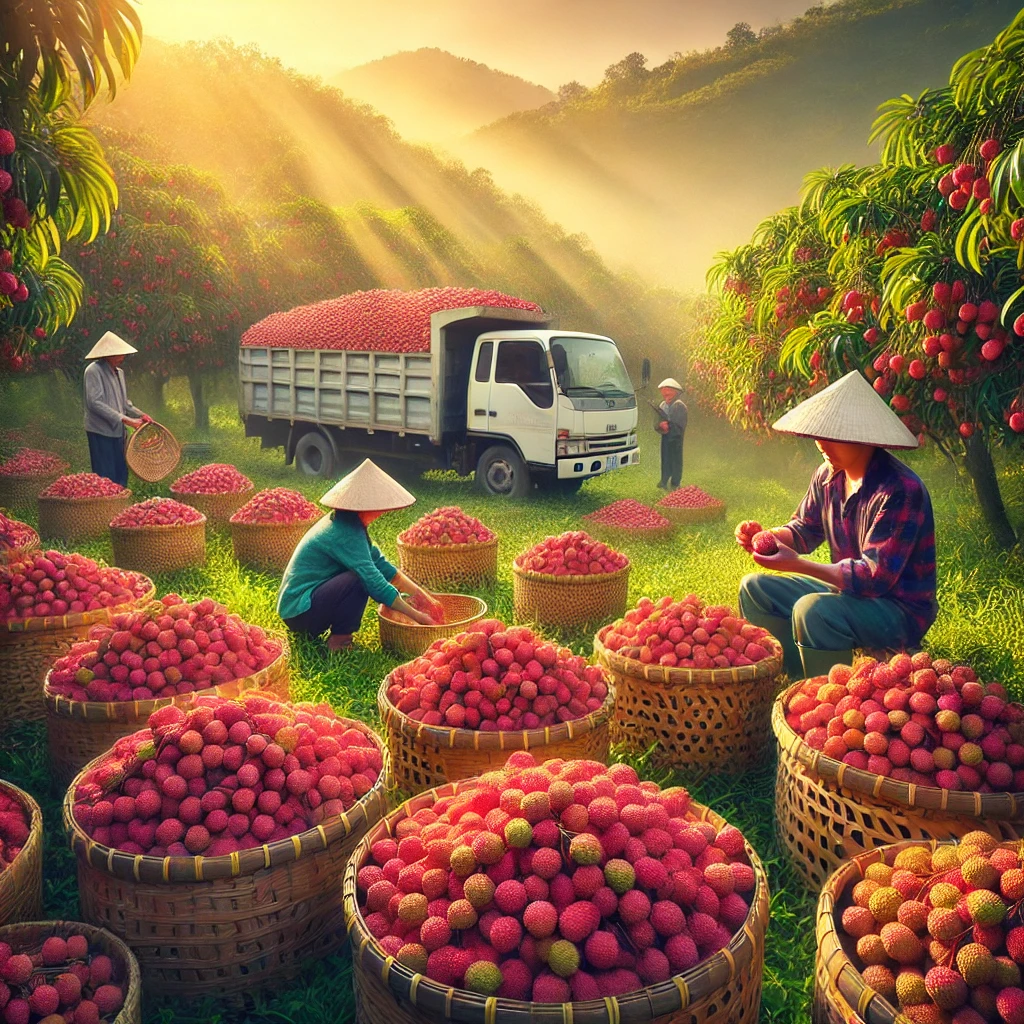Outline for the Blog Post
| Section | Content Overview |
|---|---|
| Introduction | Overview of lychee farming, its significance, and the global demand. |
| Lychee Farming: From Cultivation to Export | Comprehensive guide to lychee farming techniques. |
| 1. Cultivation | Conditions, soil preparation, and planting process for lychee trees. |
| 2. Tree Maintenance | Irrigation, pruning, pest management, and nutrient care. |
| 3. Harvesting | Optimal harvesting practices, timing, and transportation. |
| 4. Processing & Export | Sorting, packaging, and exporting processes with modern techniques. |
| Future of the Lychee Industry | Innovations and growth opportunities for lychee farming. |
| Conclusion | Summary of insights and FAQs. |
Lychee Farming: From Cultivation to Export
The fascinating journey of lychee farming showcases the perfect balance of traditional farming techniques and modern advancements. This beloved fruit, cultivated mainly in Southeast Asian countries like Vietnam and Thailand, has captured the hearts of millions globally. Let’s dive into how lychees journey from fertile fields to international markets.

1. Cultivation: Setting the Roots for Success
Cultivating lychee trees begins with choosing the right conditions. Lychees thrive in warm subtropical climates, with temperatures between 15°C and 25°C, and require well-drained acidic soil rich in organic matter.

Soil Preparation and Planting
Farmers prepare the land meticulously, enriching it with organic fertilizers and compost. Instead of traditional saplings, grafted branches are planted, allowing for uniform growth and better yield. Proper spacing between trees ensures adequate air circulation, reducing the risk of diseases.
Efficient Irrigation Systems
Drip irrigation is widely used to conserve water while ensuring even distribution to the plants. This is especially critical during dry spells, ensuring young trees receive consistent moisture.
2. Tree Maintenance: Nurturing for Growth
Lychee trees demand year-round attention, from pruning to pest control.

Pruning for Health
Regular pruning helps shape the trees, remove diseased branches, and promote better sunlight penetration. This not only ensures healthy growth but also increases fruit quality.
Pest and Disease Management
Farmers use Integrated Pest Management (IPM) strategies, combining natural predators, organic pesticides, and manual interventions. This eco-friendly approach helps maintain a healthy orchard ecosystem.
Nutrient Monitoring
Frequent soil testing allows farmers to fine-tune fertilization practices. Organic options like compost and manure are preferred to enhance soil fertility sustainably.
3. Harvesting: The Peak of Dedication
The harvesting season in Northern Vietnam begins in mid-June, marking the culmination of months of hard work. Lychees are handpicked early in the morning to preserve their freshness.

Picking Practices
Farmers meticulously select ripe clusters, avoiding any damage to the fruit’s delicate skin. These fruits are then transported quickly to processing facilities, ensuring optimal quality.
4. Processing & Export: From Orchards to Overseas
Processing lychees is as intricate as their cultivation.

Sorting and Cleaning
At processing facilities, lychees undergo thorough sorting and cleaning. Trained personnel inspect each fruit, ensuring only premium-quality lychees proceed for packaging.
Advanced Packaging Techniques
Using modified atmosphere packaging (MAP), lychees are packed in temperature-controlled containers. This technology preserves freshness during long transportation.
Export Success
In 2023, Vietnam exported approximately 100,000 tons of lychees to countries like Japan, the US, and Australia. Meeting strict international quality standards has positioned Vietnam as a leader in the lychee market.
Future of the Lychee Industry
With advancements in agriculture technologies and expanding global markets, the lychee industry shows immense potential. Efforts to integrate sustainable practices and innovate processing methods are expected to boost production and export volumes further.

Conclusion
Lychee farming is a testament to the dedication and expertise of farmers, blending tradition and technology. From the fertile soils of Vietnam to supermarket shelves worldwide, the journey of lychees reflects the promise of a thriving agricultural sector.


